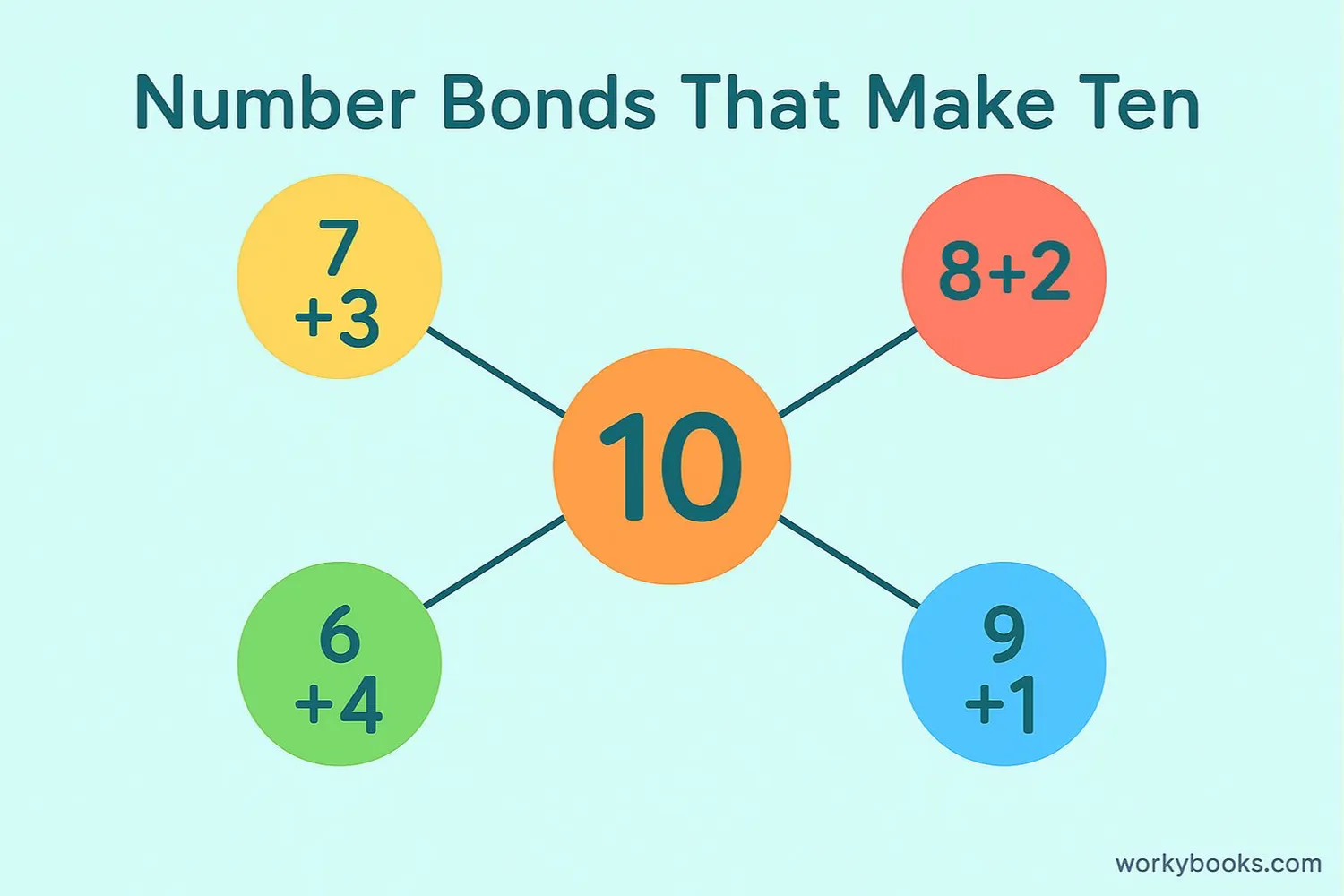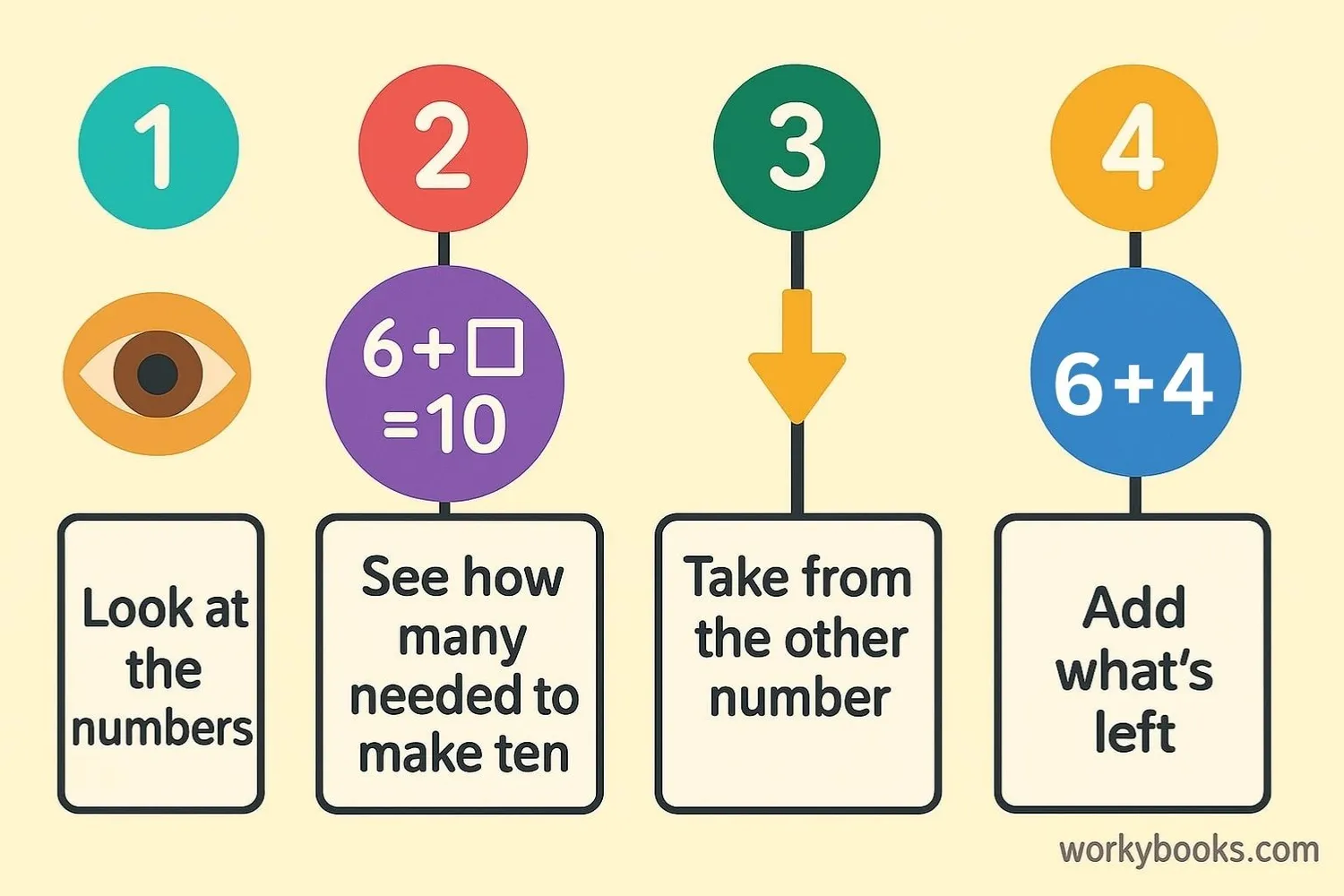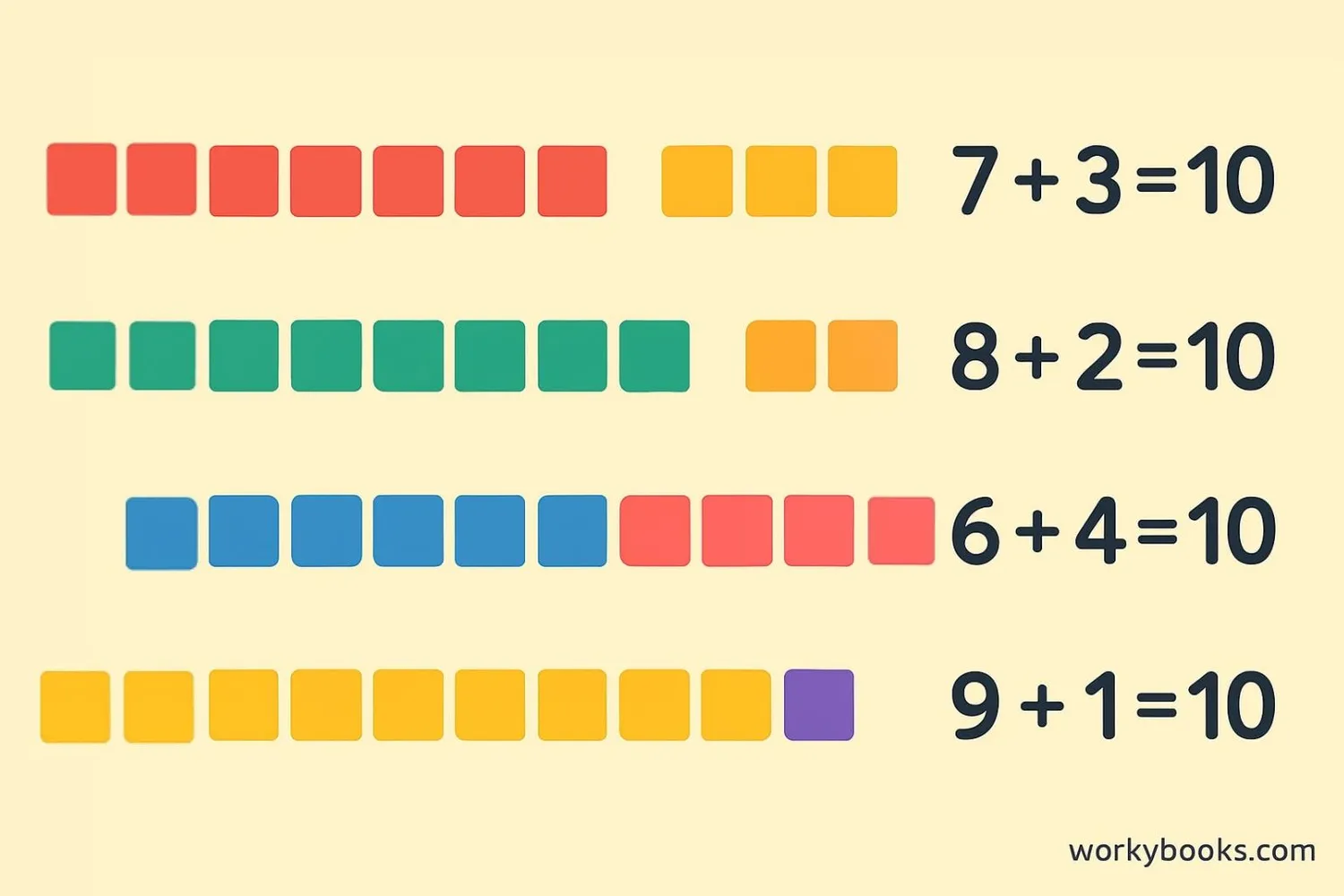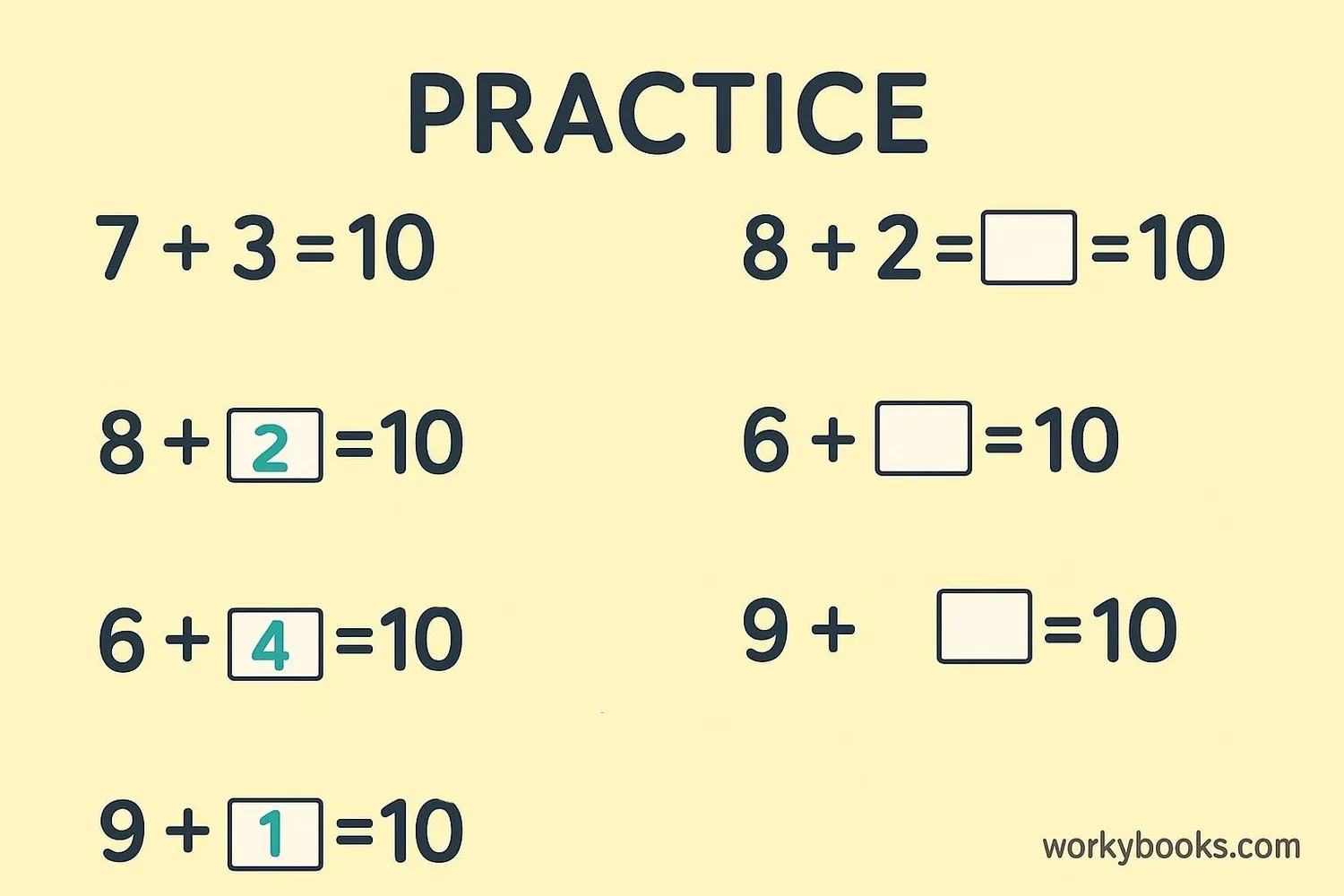Make Ten - Definition, Examples, Quiz, FAQ, Trivia
Learn to use the make ten strategy to solve addition problems quickly and easily
What is the Make Ten Strategy?

The make ten strategy is a mental math technique where you break down an addition problem to make a ten first, then add what's left. This strategy helps you solve addition problems quickly and easily.
Why is making ten so helpful? Because adding with ten is much easier than adding other numbers! Our number system is based on tens, so our brains naturally find it easier to work with tens.
When we use the make ten strategy, we look for number pairs that add up to ten. These number pairs are called number bonds. Some important number bonds to ten are: 1+9, 2+8, 3+7, 4+6, and 5+5.
Key Concept
Number bonds are pairs of numbers that add together to make another number. For the make ten strategy, we focus on number bonds that equal 10.
How to Use the Make Ten Strategy

Using the make ten strategy is simple once you know the steps. Let's learn how to do it:
Step 1: Look at the numbers you're adding. For example, 8 + 5.
Step 2: Ask yourself: How many more does the first number need to make ten? 8 needs 2 more to make 10.
Step 3: Take that amount from the second number. 5 - 2 = 3.
Step 4: Now you have 10 + 3 = 13.
So 8 + 5 = 13! You made a ten first, then added what was left.
Let's try another example: 7 + 6
7 needs 3 to make 10.
Take 3 from 6: 6 - 3 = 3
Now add: 10 + 3 = 13
So 7 + 6 = 13
Make Ten Formula
Break down the numbers to make a ten first, then add the remainder.
Remember
You can make ten from either number. Try both ways to see which is easier for you!
Make Ten Strategy Examples

Let's look at more examples of the make ten strategy:
Example 1: 9 + 4
9 needs 1 to make 10.
Take 1 from 4: 4 - 1 = 3
Now add: 10 + 3 = 13
So 9 + 4 = 13
Example 2: 6 + 7
6 needs 4 to make 10.
Take 4 from 7: 7 - 4 = 3
Now add: 10 + 3 = 13
So 6 + 7 = 13
Example 3: 8 + 8
8 needs 2 to make 10.
Take 2 from 8: 8 - 2 = 6
Now add: 10 + 6 = 16
So 8 + 8 = 16
Notice how we always make a ten first, then add the leftover amount. This makes addition much easier!
Number Bonds to Ten
| First Number | Second Number | Equals |
|---|---|---|
| 1 | 9 | 10 |
| 2 | 8 | 10 |
| 3 | 7 | 10 |
| 4 | 6 | 10 |
| 5 | 5 | 10 |
| 6 | 4 | 10 |
| 7 | 3 | 10 |
| 8 | 2 | 10 |
| 9 | 1 | 10 |
Practice Tip
Memorize the number bonds to ten. This will make the make ten strategy much faster and easier!
Practice Making Ten

Now it's your turn to practice the make ten strategy! Try solving these problems using the make ten method:
1. 7 + 5 = ?
2. 9 + 6 = ?
3. 8 + 4 = ?
4. 6 + 8 = ?
5. 5 + 7 = ?
Remember the steps:
- See how many more the first number needs to make ten
- Take that amount from the second number
- Add ten to what's left
Check your answers:
1. 7 + 5 = 12 (7 needs 3 to make 10, 5-3=2, 10+2=12)
2. 9 + 6 = 15 (9 needs 1 to make 10, 6-1=5, 10+5=15)
3. 8 + 4 = 12 (8 needs 2 to make 10, 4-2=2, 10+2=12)
4. 6 + 8 = 14 (6 needs 4 to make 10, 8-4=4, 10+4=14)
5. 5 + 7 = 12 (5 needs 5 to make 10, 7-5=2, 10+2=12)
Practice Makes Perfect
The more you practice the make ten strategy, the faster and easier it will become. Soon you'll be able to do it in your head without thinking!
Make Ten Strategy Quiz
Test your understanding of the make ten strategy with this 5-question quiz. Choose the correct answer for each question.
Frequently Asked Questions
Here are answers to common questions about the make ten strategy:
Math Trivia
Discover interesting facts about numbers and math strategies:
Base-10 Number System
Our number system is based on 10 likely because we have 10 fingers! This is why making ten is such a natural strategy for humans. Other cultures have used different number bases, like the Babylonians who used a base-60 system.
Brain and Math
Research shows that when people use mental math strategies like making ten, different parts of their brain work together. This helps strengthen neural connections and improves overall math ability!
Math Around the World
In Asian countries like Singapore, the make ten strategy is taught using special diagrams called number bonds. Singapore math is famous for its focus on number sense and mental math strategies.
The Power of Ten
The number 10 is special in math. It's a triangular number (1 + 2 + 3 + 4 = 10) and the base of our number system. Understanding how numbers relate to 10 is a key math skill that helps with addition, subtraction, and even multiplication and division!





